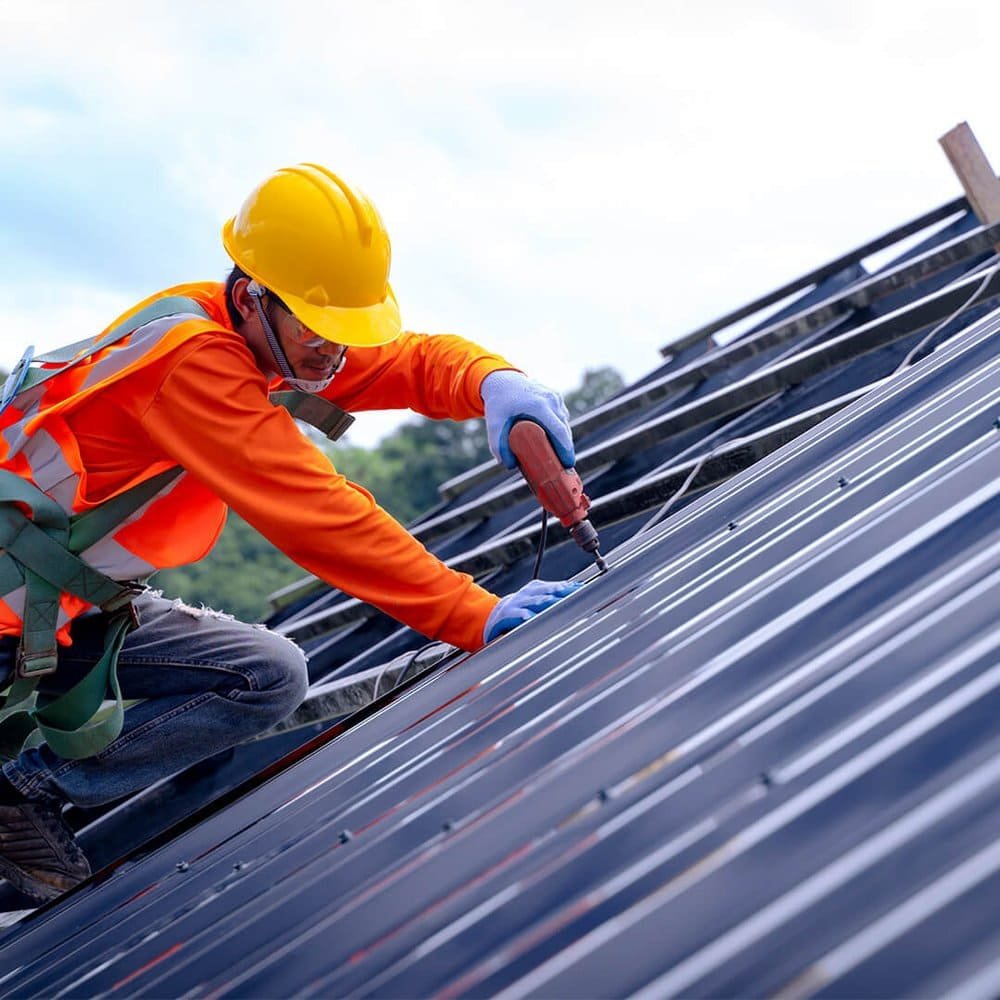
There’s nothing more frustrating than discovering a roof leak in the middle of a rainstorm. Water dripping through your ceiling can cause significant damage to your home if not addressed promptly.
Fortunately, with a few practical steps and some help from the experts at JC Roofings, you can stop a roof leak even when it’s raining. Here’s a simple guide to help you manage this common problem effectively.
Step-by-Step Guide to Stopping a Roof Leak
1. Identify the Source of the Leak
The first step in stopping a roof leak is to locate where the water is coming from. This might be challenging during a storm, but it’s crucial. Look for wet spots on your ceiling, walls, or in the attic. Follow the path of the water to find the entry point. Common sources include damaged shingles, flashing, or gutters.
2. Use a Tarp for Temporary Protection
Once you’ve identified the source of the leak, the quickest way to prevent further water damage is to cover the affected area with a tarp. Here’s how to do it:
Choose the Right Tarp: Use a heavy-duty, waterproof tarp that’s large enough to cover the damaged area and extend beyond it by at least 3 feet.
Secure the Tarp: Use nails, screws, or adhesive strips to secure the tarp to the roof. Make sure the edges are tightly fastened to prevent wind from blowing it away.
3. Apply Roofing Cement
Roofing cement can provide a temporary fix to stop the leak until you can get professional repairs. It works well for small holes and cracks. Here’s what you need to do:
Clean the Area: Ensure the area around the leak is clean and dry.
Apply Roofing Cement: Use a putty knife to spread a generous amount of roofing cement over the leak. Press it firmly into place, covering the damaged area completely.
4. Use Roof Patch
For more substantial leaks, a roof patch can be an effective solution. Roof patches are made of adhesive material designed to cover larger holes or cracks. Follow these steps:
Cut the Patch to Size: Ensure the patch is slightly larger than the damaged area.
Apply the Patch: Peel off the backing and press the patch over the leak. Smooth out any bubbles or wrinkles to ensure a tight seal.
5. Manage Indoor Leaks
While addressing the leak on the roof, it’s also essential to manage the water coming inside your home:
Contain the Water: Put buckets or containers under the leak to collect the dripping water.
Protect Your Belongings: Move furniture, electronics, and other valuables away from the leak to prevent water damage.
When to Call the Professionals
While these temporary fixes can help manage a roof leak during a storm, it’s crucial to get a permanent solution as soon as possible. JC Roofings offers comprehensive roofing repair services that ensure your home stays dry and protected. Here’s why you should call JC Roofings:
Expertise and Experience: With years of experience in the roofing industry, our team can quickly identify and repair any roofing issue.
Quality Materials: At J Roofing we use high-quality materials to ensure long-lasting repairs.
Emergency Services: We know that leaks can occur at any moment. Our emergency services are available to provide immediate assistance.
Conclusion
Dealing with a roof leak during a rainstorm can be stressful, but with these practical steps and the help of JC Roofings, you can minimize damage and keep your home safe. Remember, these are temporary solutions. For a permanent fix, contact JC Roofings and let our professionals handle the repairs. Remain protected and dry, whatever the weather!
For more information or to schedule a repair, visit our website or call us today.

